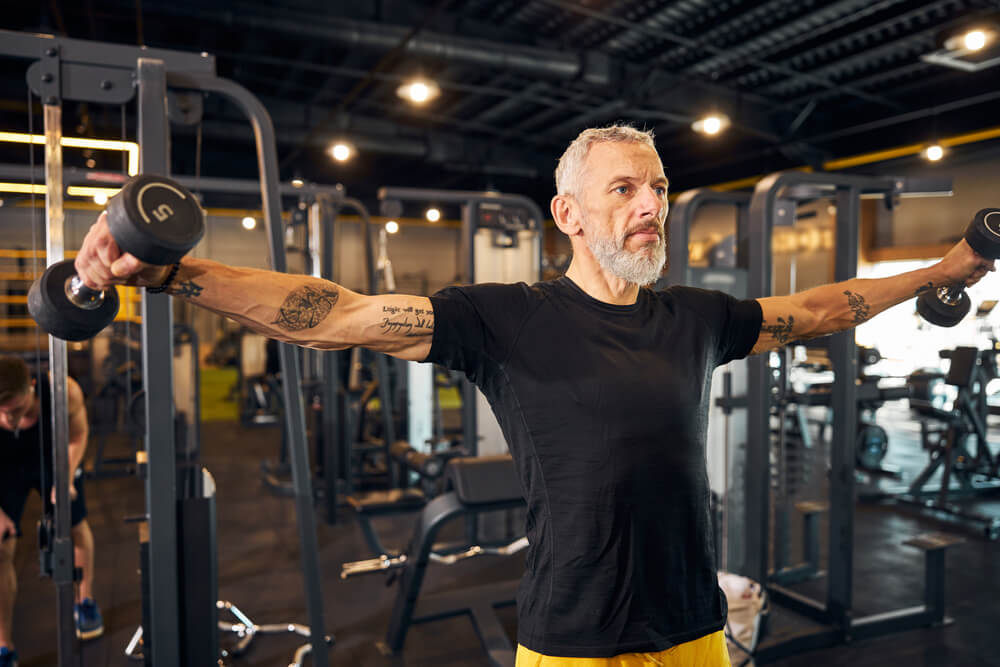Getting no where with your shoulder training? Hopefully this post will help. Lets dive into the anatomy of the shoulder and explore the best lateral raise variations you should be doing if you want to ignite new growth and train all three heads of your deltoids evenly.
The Anatomy of the Shoulder Muscles (Deltoids)
The shoulder is the most versatile joint in the human body, capable of moving in a variety of directions. This is largely thanks to the deltoid muscles, which envelopes the shoulder joint like a giant cap. The deltoid is divided into three distinct sections, or "heads": the anterior (front), medial (middle), and posterior (rear).
- Anterior Deltoid: Primarily involved in shoulder flexion and internal rotation.
- Medial Deltoid: Plays a key role in shoulder abduction (raising your arm out to the side).
- Posterior Deltoid: Responsible for shoulder extension and external rotation.
To develop well-rounded, balanced shoulders, it's crucial to target all three heads of the deltoid muscle in your workout routine. Focusing too much on the anterior or medial heads can lead to imbalances, shoulder rounding, and other issues.
The Lateral Raise and its Variations
The lateral raise is an amazing exercise that primarily targets the medial deltoid but also engages the other two heads to varying degrees. However, by tweaking the movement, you can shift the focus to hit different parts of your shoulder.
-
Traditional Lateral Raise: Stand tall with a dumbbell in each hand. Keeping a slight bend in your elbows, lift your arms out to the sides until they're parallel with the floor. Lower them back down with control.
-
Bent-Over Lateral Raise: This variation targets the often-neglected posterior deltoid. Bend at the hips until your torso is almost parallel to the floor, then perform the same lifting movement as the traditional lateral raise. You will likely need to lower the weight to complete this variation, as the rear delt is much smaller than the medial head.
-
Powell Lateral Raise: Performed using a cable machine or bench, this variant allows for a constant tension on the deltoid muscle throughout the entire movement. Stand sideways to the cable machine, grab the handle with the hand opposite to the front foot, lift your arm out to the side until it's parallel to the ground, then lower it back down.
-
Seated Lateral Raise: By sitting down, you eliminate momentum from the exercise, making your muscles work harder. Sit on a bench with a dumbbell in each hand and perform the traditional lateral raise movement. Hold the top position for 1 to 3 seconds before lowering the weight.
-
Incline Lateral Raise: Lie face-down on an incline bench. This position targets the posterior deltoids effectively by changing the angle of the exercise.
Remember, when performing these exercises, it's critical to maintain good form and to use weights you can control - don't use a weight that you can not hold the contracted position or would cause you to slam back to the starting position.
Conclusion
Targeting all three heads of the deltoid muscle will not only result in stronger and more balanced shoulders, but also contribute to a better posture and decreased risk of injury. Incorporate these lateral raise variations into your workout routine and watch your shoulders grow.
As always, before starting any new exercise regimen, it's best to consult with a fitness professional to ensure you're performing the movements correctly and safely. Stay strong, keep pushing, and happy lifting!






